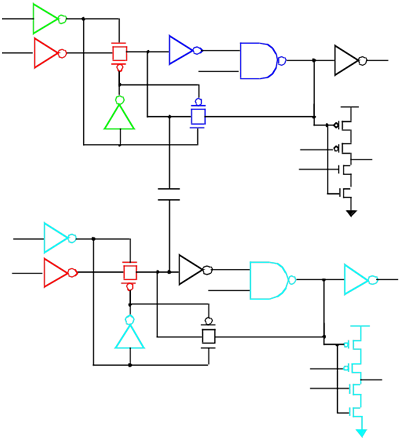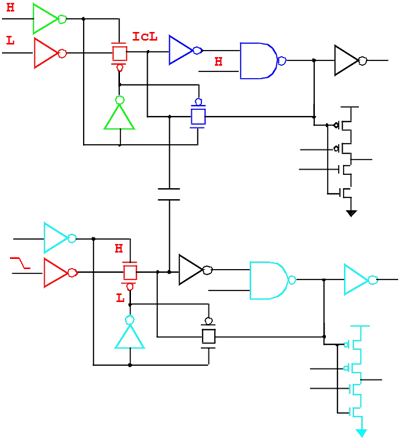![]()
XE-CCNASC (Capacitive Coupling Noise Analysis Simulation Cut) generates a Spice-simulatable netlist along with control file that includes the complete context of a victim and aggressors for Spice simulation. XE-CCNASC inputs a hierarchical shcematic spice netlist and/or exracted dspf netlist, automatically derives circuit properties and logical equations for each net and transistor in the netlist, and stores these data in XE-Core engine. XE-CCNASC then generates spice deck based on victim node and aggressor nodes identified by corresponding coupling capcitance from the victim node. Unique simulation control files will be generated for 4 different types of CCNs: high-up, low-up, high-down, low-down.

A circuit can be a victim or aggressors, and following is an example of a victim and an aggressor in a cut which describes how CcnaSc generats a circuit from original input schematic netlist.
 |
A Circuit can be a Victim or Aggressors: Victim: Driver and feedback loop.
Modeling of Load devices for vimctim and aggressor:
|
Following circuit with label shows example of sensitizing a state node (LU Noise).
 |
Sensitization Types
For Victim:
For Aggressors:
|